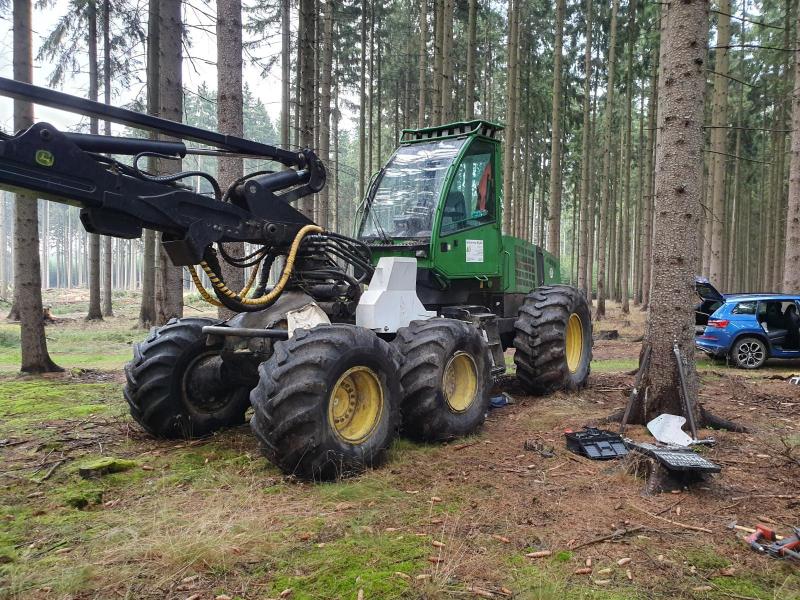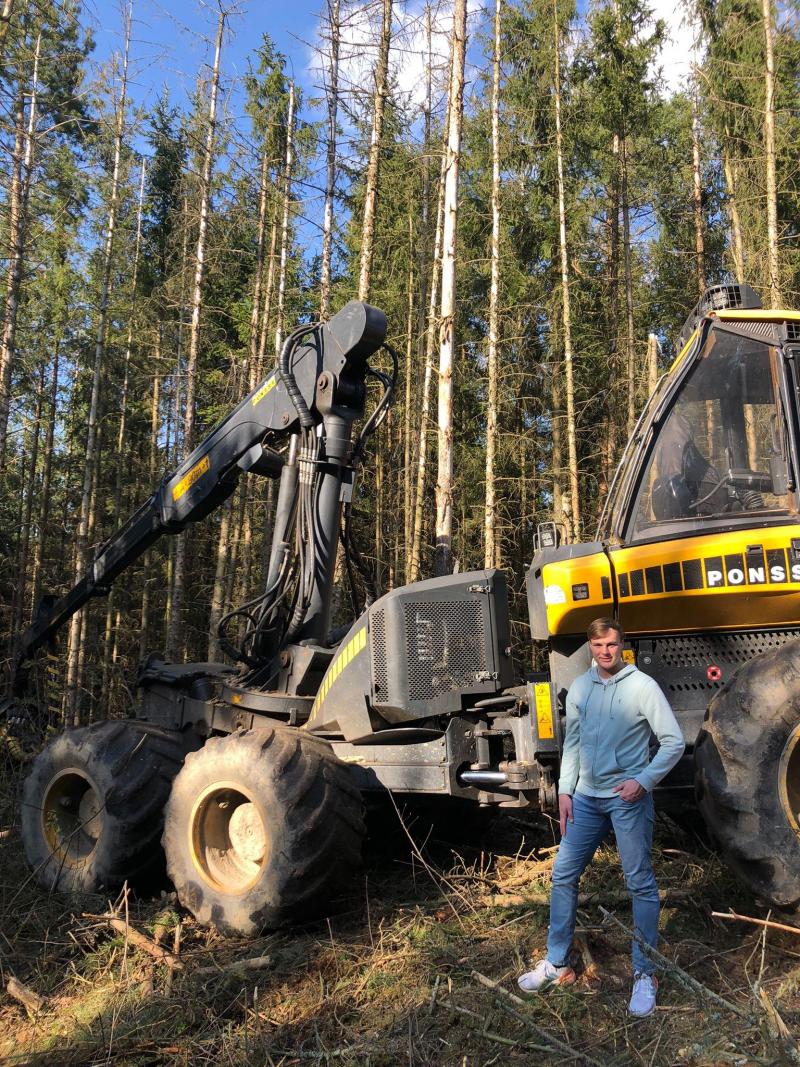Ideas and discoveries
I have wanted a patent since I was a child, says student Tomáš Němec

"I have been working on the idea for many years. It started during my studies at the secondary technical school in Žďár nad Sázavou. The local forests were affected by bark beetle and the owner of the large woods in the area, Mr. Kinský, was interested whether harvesters could also treat the logs against bark beetle during felling, so that the job would not have to be performed manually," recalls Tomáš Němec, who is currently studying at the FME in the second year of Fundamentals of Mechanical Engineering.
His father knew Mr. Kinský in person, so they put their heads together, involving also Tomáš and one of his high school teachers and came to this idea together. They together built a prototype and Tomáš also combined his graduation work with the development of this technology. In his first year at BUT, he participated with this idea in the Student Entrepreneurship Award.
Harvesters are designed to cut down the tree and remove its branches. If the tree gets infested by a bark beetle, it needs to be chemically treated or stripped of its bark. A special device can be added to the harvester to unbark the trunk, but this will slow down the machine's work by as much as half. Another way is the manual spraying, which is not so effective. "Our equipment allows treatment and felling within a single process, it does not slow down work in the forest or limit the operation of the machine," explains Tomáš Němec.
There are four nozzles positioned on the harvester head, which chemically treat the trunk that passes through the head. "Every make of harvester and every model year is a little different, so we always have to adapt the equipment to the specific type of machine," says Tomáš, who is now working on a second-generation prototype. He is already designing it for use with harvester made by a particular manufacturer of forestry equipment. "I contacted the director of the Czech representation of a large multinational company and we are getting full support from their side," confirms Němec.
Tomáš Němec, together with other originators, even wants to protect the invention with a European patent. "I've been involved in engineering since I was little boy. My grandpa is a technician, Dad too. I am the third generation of our family studying at BUT. Ever since I was little, when I learned what a patent was, I always wanted to own one," he says with a smile. His dream of applying for his own patent came true when he was only eighteen years old.
Tomáš Němec also plans to build a business around the idea, which is why he entered the Student Entrepreneurship Award. He said the mentoring and feedback from the jury members moved him forward. "There were quite a lot of good observations of the jury, probably the most important was the warning that I do not have to focus only on bark beetles, because the device can be used to spray any tree that is felled with a harvester. Of course, I was also pleased with the financial reward for the third place. And I benefit a lot from the possibility to cooperate with the JIC. I go there for various consultations or courses that help me move forward," says Tomáš Němec, who would like to combine his bachelor thesis with "his" technology.
(mar)
